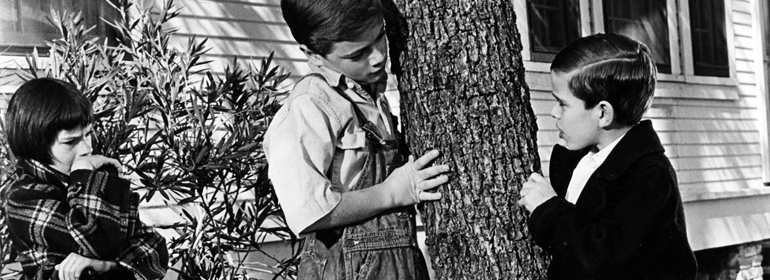Classic movies with gay subtexts – think you know them all? Well, think again…
No’ 1: To Kill a Mockingbird (Robert Mulligan, 1968)
The one-parent family at the centre of Harper Lee’s novel, To Kill a Mockingbird is a microcosm of difference in the face of reactionary society. The narrator/daughter, Scout is also one of those icons deeply entrenched in lesbian culture. A wide-eyed, denim dungaree-clad imp, up to her neck in summertime mischief, she is the personification of dyke, tomboy childhood. Watching could identify.
It is ironic, therefore, that the real queer character in Robert Mulligan’s 1968 film version is Dill, the young boy who spends his summers with Scout and her brother, Jem. In the novel Dill’s character is based on the gay writer, Truman Capote who was one of Harper Lee’s childhood friends. The casting of John Megna as Dill part is, in this case, inspired. His odd, girlish neediness contrasted with a nasty, vain edge, is the stuff of great queer child characters.
“Dill was a curiosity,” Scout says in the movie. “He wore blue linen shorts that buttoned to his shirt, his hair was snow white and stuck to his head like duckfluff. He was a year my senior but I towered over him. As he told us the old tale his blue eyes would lighten and darken; his laugh was sudden and happy; he habitually pulled at a cowlick in the centre of his forehead.”
The ostracised and deeply feared character of Boo Radley can also be considered in a queer light. When he ‘comes out’ under duress, we discover that his sensitivity has always been his Achilles heel.
© 2014 GCN (Gay Community News). All rights reserved.

comments. Please sign in to comment.